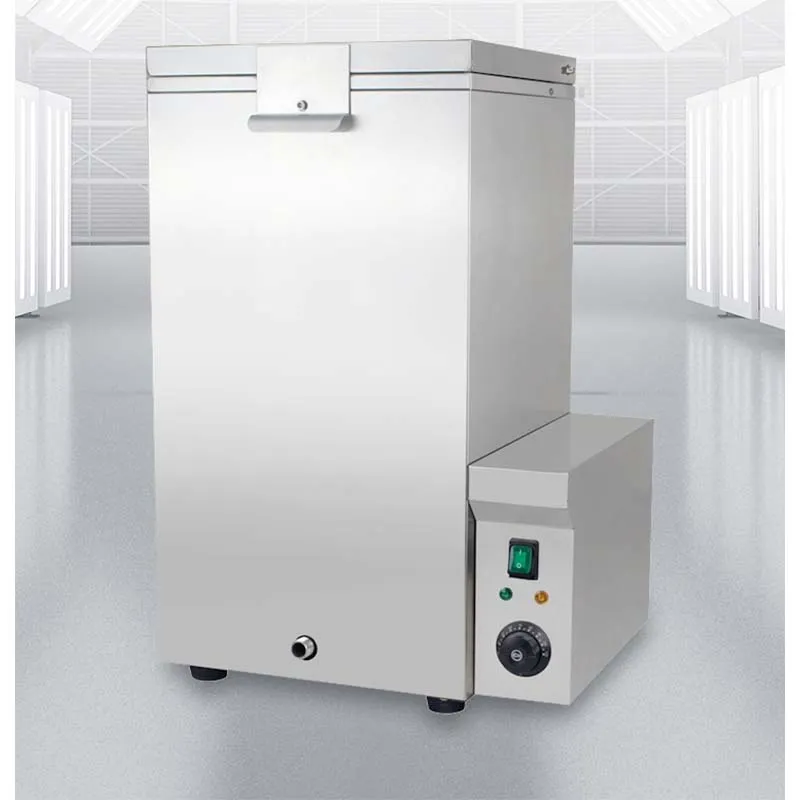Efficient Cooling Solutions for Feed Pellets to Enhance Quality and Shelf Life
Dec . 06, 2024 12:03 Back to list
Efficient Cooling Solutions for Feed Pellets to Enhance Quality and Shelf Life
The Importance of Feed Pellet Coolers in Animal Nutrition
In modern animal husbandry, the nutritional quality of feed is paramount to ensuring the health and productivity of livestock. One of the crucial processes in feed production is pelleting, which involves compressing feed ingredients into small, dense pellets. This method not only enhances the feed's digestibility and palatability but also facilitates easier handling and storage. However, an often-overlooked component of this process is the cooling of the feed pellets. Feed pellet coolers play a significant role in maintaining the integrity and quality of the feed, contributing to improved animal health and farm productivity.
The Pelleting Process
Before delving into the specifics of feed pellet coolers, it is essential to understand the pelleting process. During pelleting, feed ingredients are subjected to high temperatures and pressures. This process can cause the moisture content of the pellets to rise significantly, which can lead to a variety of issues if not addressed promptly. If hot pellets are stored without adequate cooling, there is a greater risk of mold growth, nutrient degradation, and the development of mycotoxins, all of which can adversely affect the health of the animals consuming the feed.
The Role of Feed Pellet Coolers
Feed pellet coolers are designed to lower the temperature of the freshly produced pellets quickly and efficiently. By reducing the temperature from the high levels reached during the pelleting process, coolers help stabilize the moisture content and prevent spoilage. There are several types of coolers available, including counterflow coolers, batch coolers, and continuous coolers, each of which has its advantages depending on the scale of production and specific requirements of the feed mill.
Benefits of Using Feed Pellet Coolers
feed pellet cooler

1. Improved Feed Quality The primary function of a feed pellet cooler is to preserve the nutritional value of the pellets. By ensuring that the pellets are cooled to an appropriate temperature, feed pellet coolers help prevent the loss of essential nutrients that might otherwise degrade during storage.
2. Extended Shelf Life Proper cooling significantly extends the shelf life of feed pellets. By reducing moisture levels and minimizing the risk of microbial growth, coolers help maintain the freshness and quality of feed over longer periods, ensuring that livestock receive the best possible nutrition.
3. Enhanced Animal Performance Livestock thrive on high-quality feed. When animals receive feed that has been properly cooled and stored, they are more likely to exhibit improved growth rates, better feed conversion ratios, and overall enhanced health. This, in turn, translates into increased productivity for farmers and better returns on investment.
4. Energy Efficiency Modern feed pellet coolers are designed with energy efficiency in mind. Many incorporate advanced technologies that minimize energy consumption while maximizing cooling effectiveness. This not only reduces operational costs but also contributes to a more sustainable feed production process.
5. Customization Options Feed pellet coolers can be tailored to fit specific production needs. For example, some operations may require larger coolers for higher throughput, while others may need smaller units for specialized feed types. Flexibility in design ensures that the cooling process can adapt to varying production demands.
Conclusion
In conclusion, the role of feed pellet coolers in animal nutrition and feed production cannot be underestimated. They are essential for maintaining feed quality, extending shelf life, and ultimately contributing to the overall health and performance of livestock. As the demand for high-quality animal feed continues to grow, the importance of investing in efficient and reliable feed pellet cooling systems becomes increasingly clear. Farmers and feed mill operators must recognize the significant benefits these systems offer, ensuring that their livestock receive the best possible nutrition and support for optimal productivity. By prioritizing the use of feed pellet coolers in their operations, they are better positioned to meet the challenges of modern animal feed production and contribute to the sustainable growth of the agricultural sector.
-
Automatic Feeding Line System-Pan Feeder Nipple Drinker|Anping County Yize Metal Products Co., Ltd.
NewsJul.29,2025
-
Hot Sale 24 & 18 Door Rabbit Cages - Premium Breeding Solutions
NewsJul.25,2025
-
Automatic Feeding Line System Pan Feeder Nipple Drinker - Anping County Yize Metal Products Co., Ltd.
NewsJul.21,2025
-
Automatic Feeding Line System Pan Feeder Nipple Drinker - Anping County Yize Metal Products Co., Ltd.
NewsJul.21,2025
-
Automatic Feeding Line System - Anping Yize | Precision & Nipple
NewsJul.21,2025
-
Automatic Feeding Line System - Anping Yize | Precision & Nipple
NewsJul.21,2025






